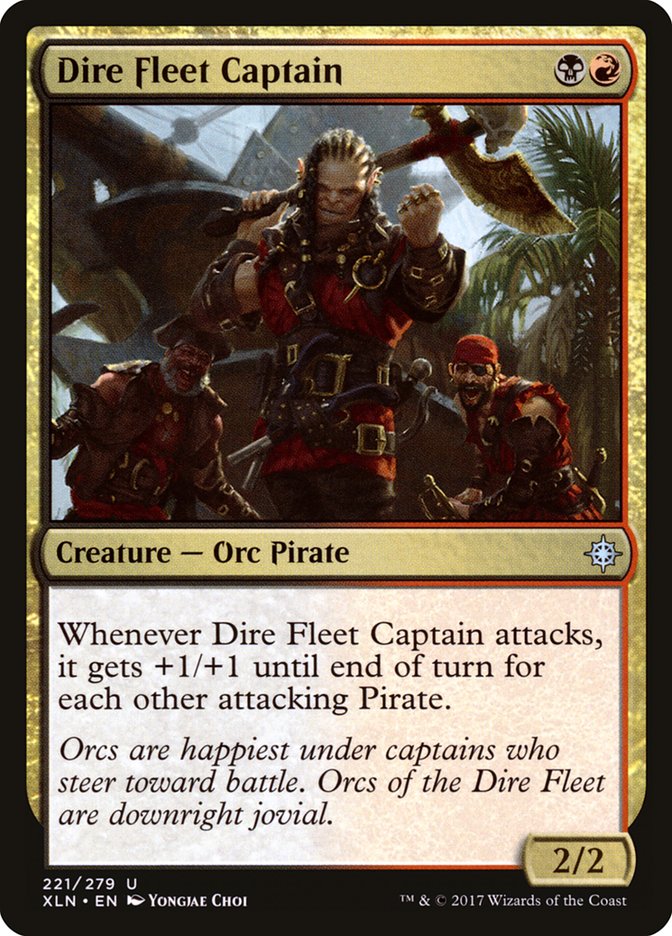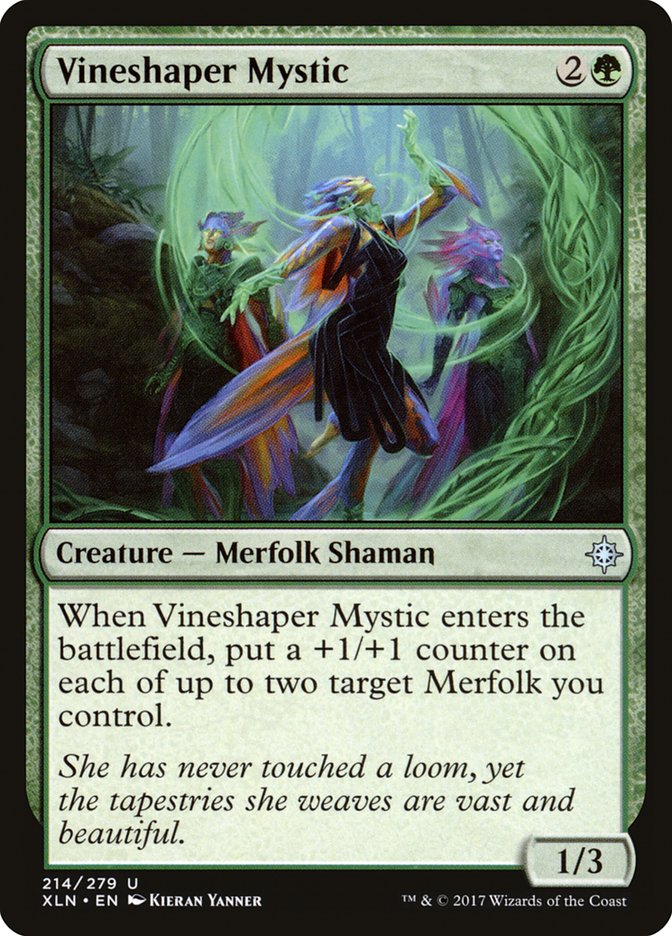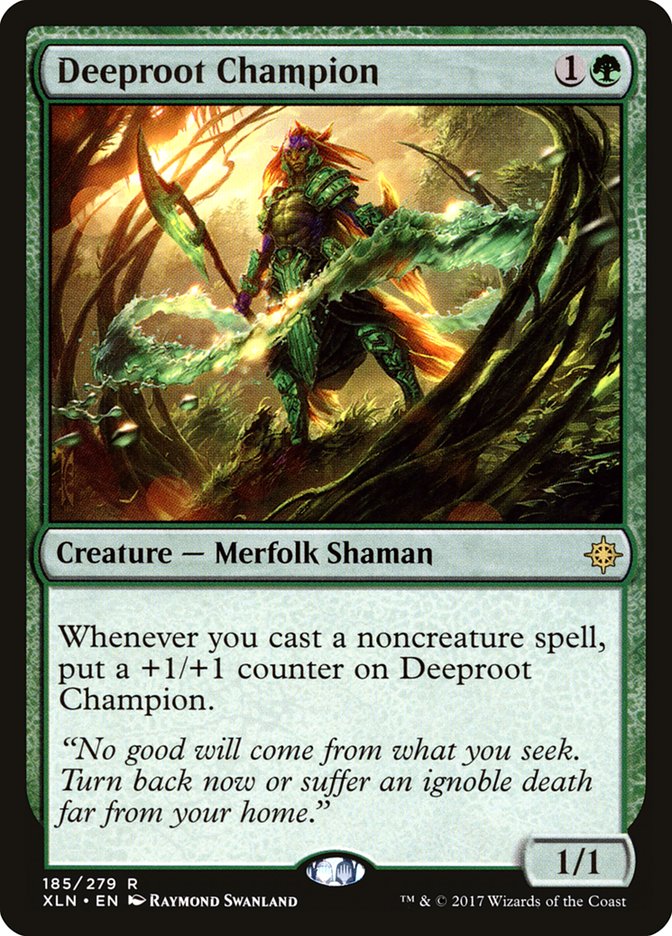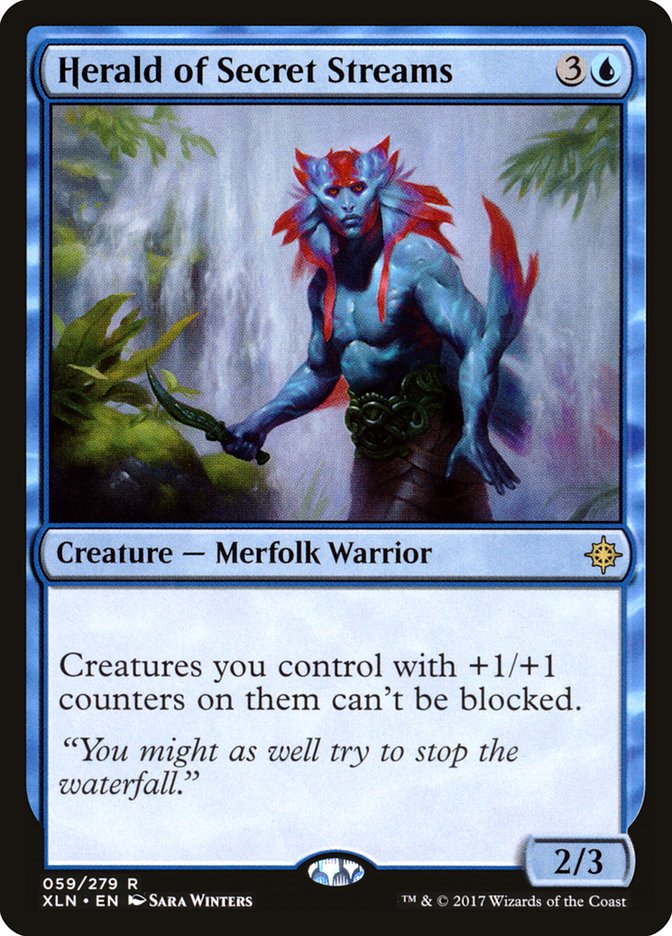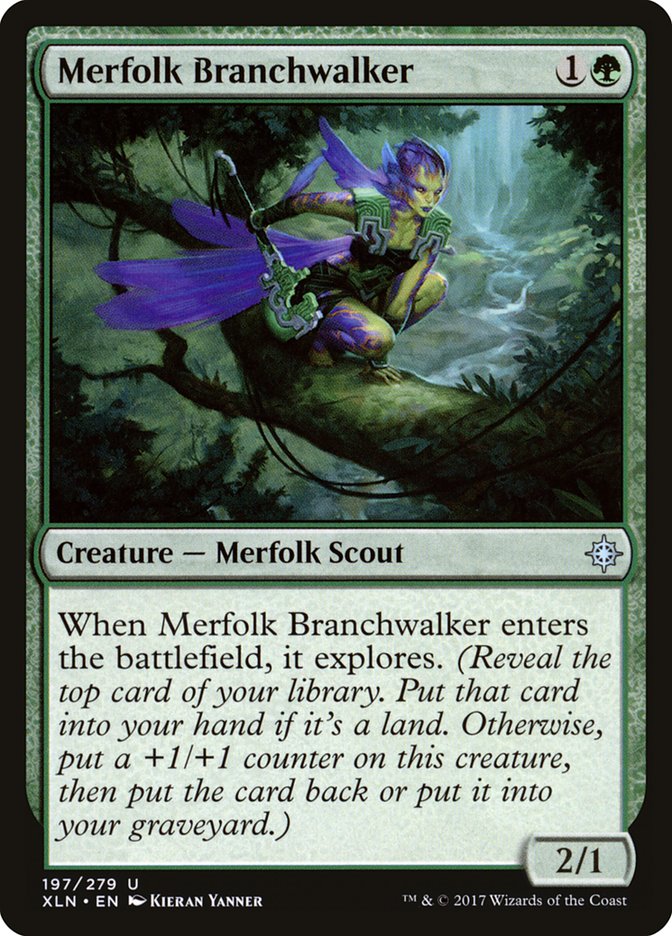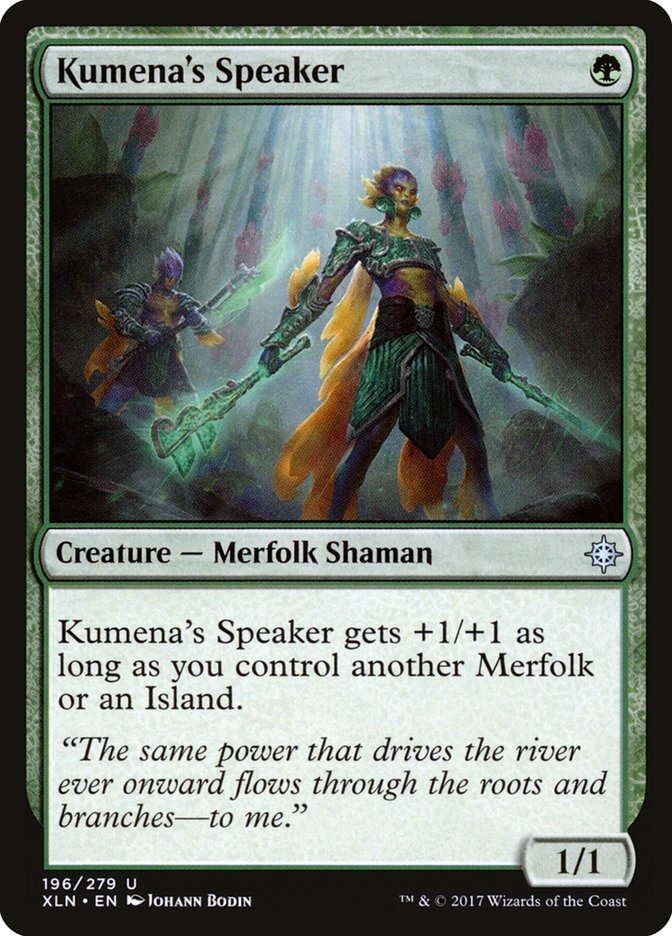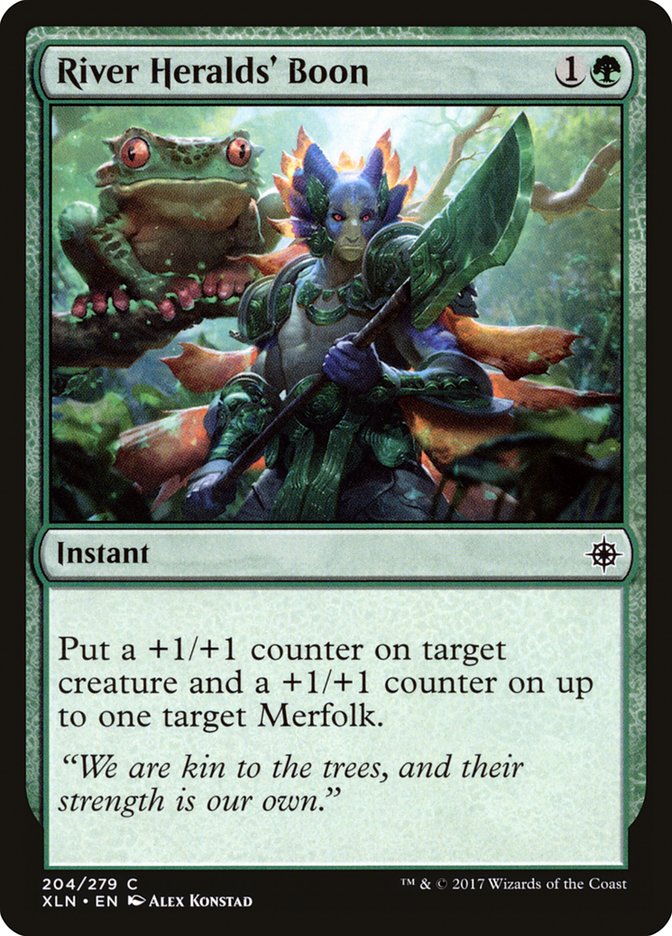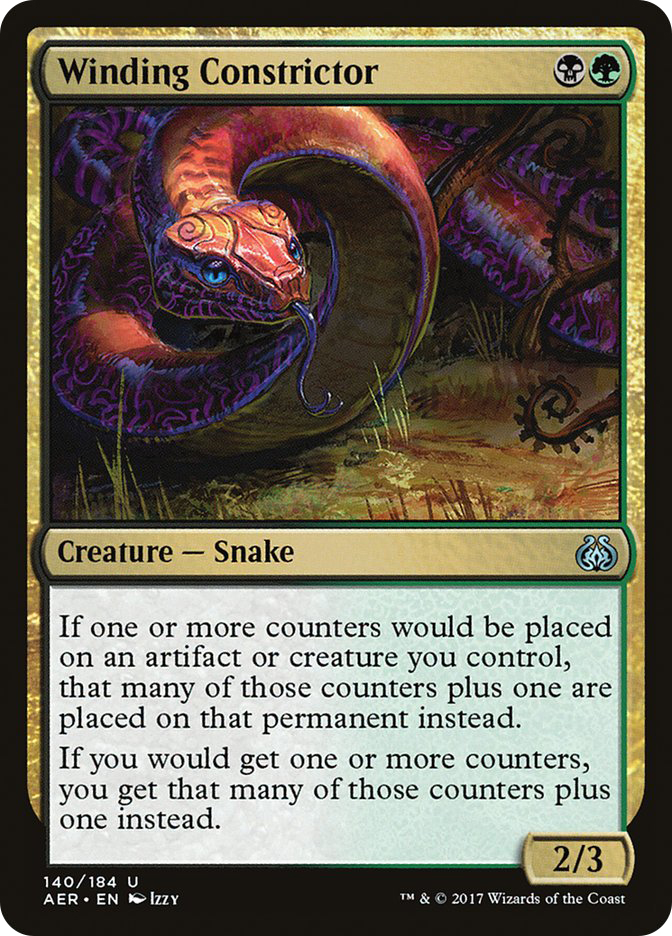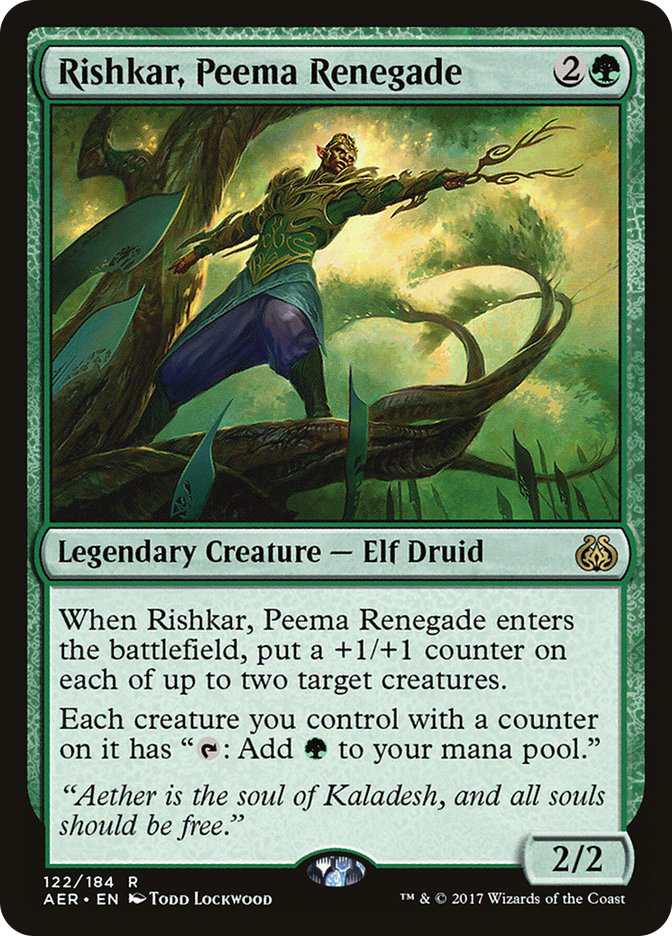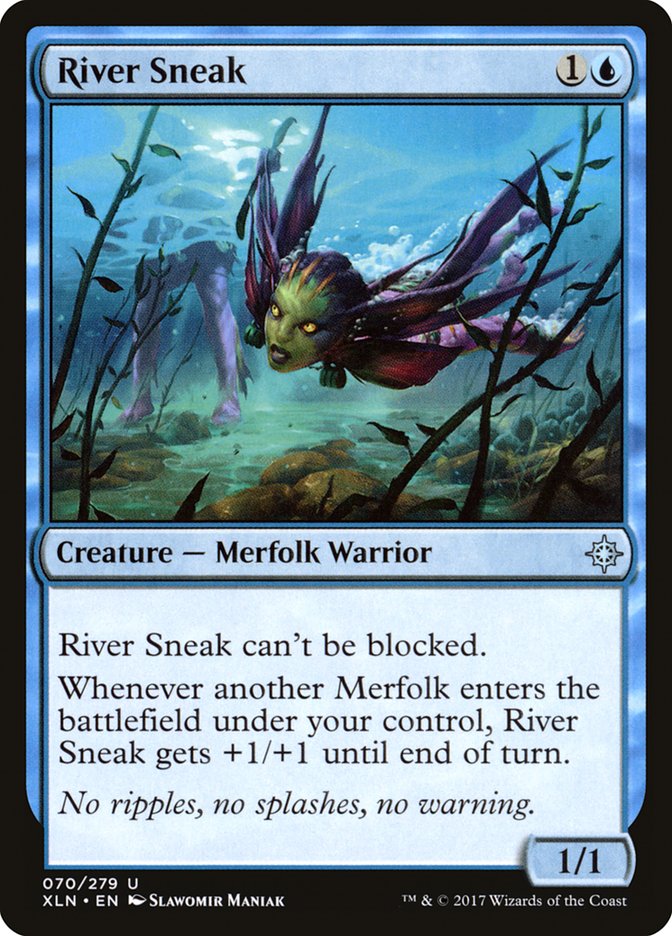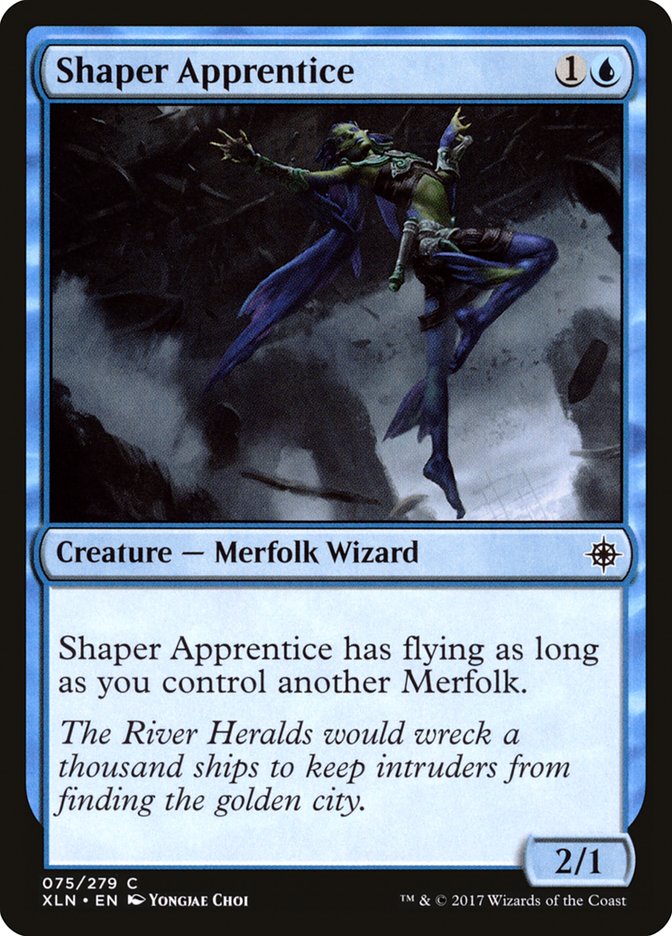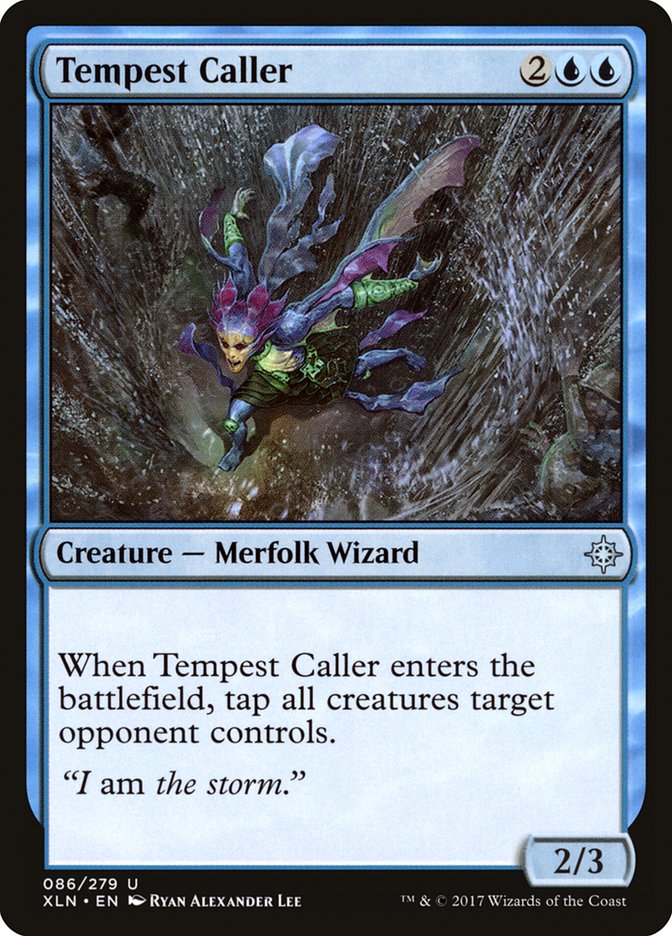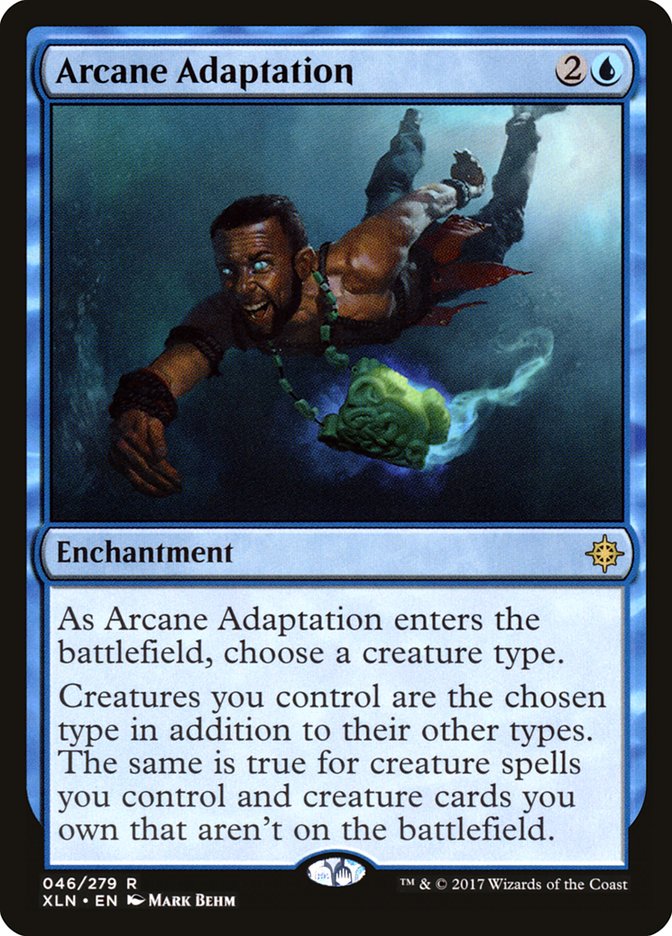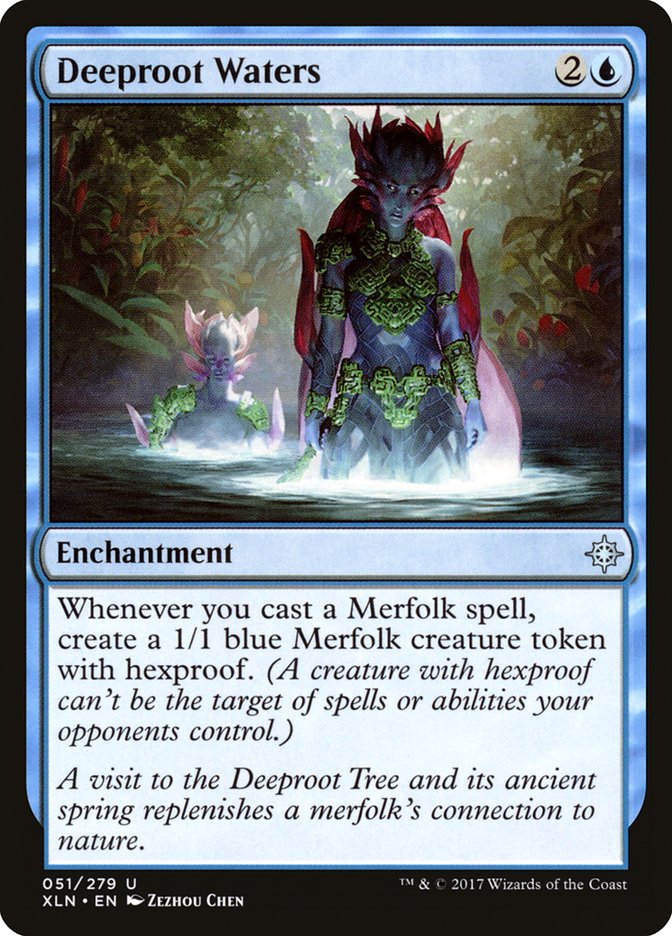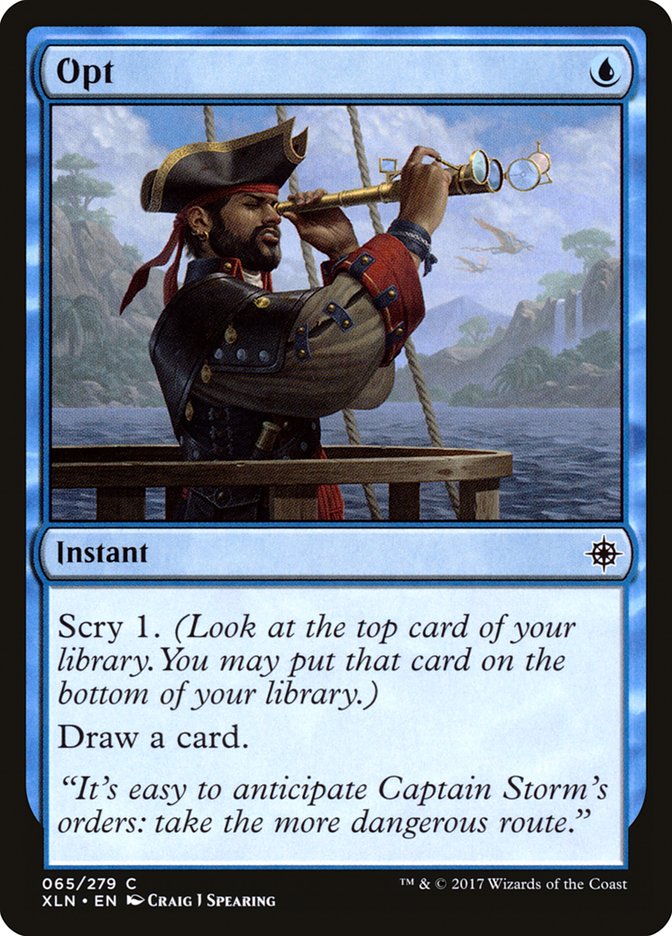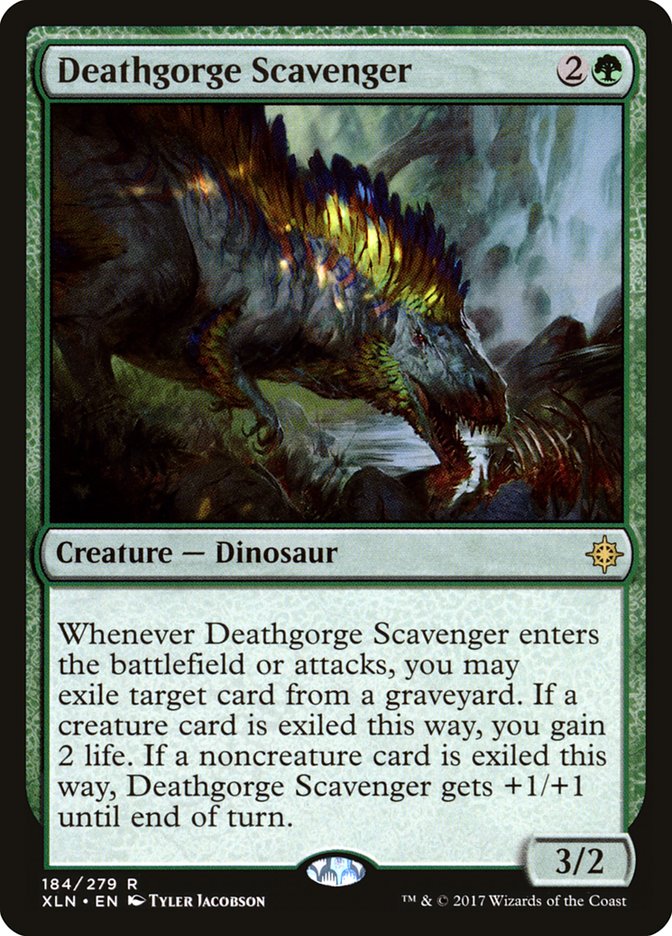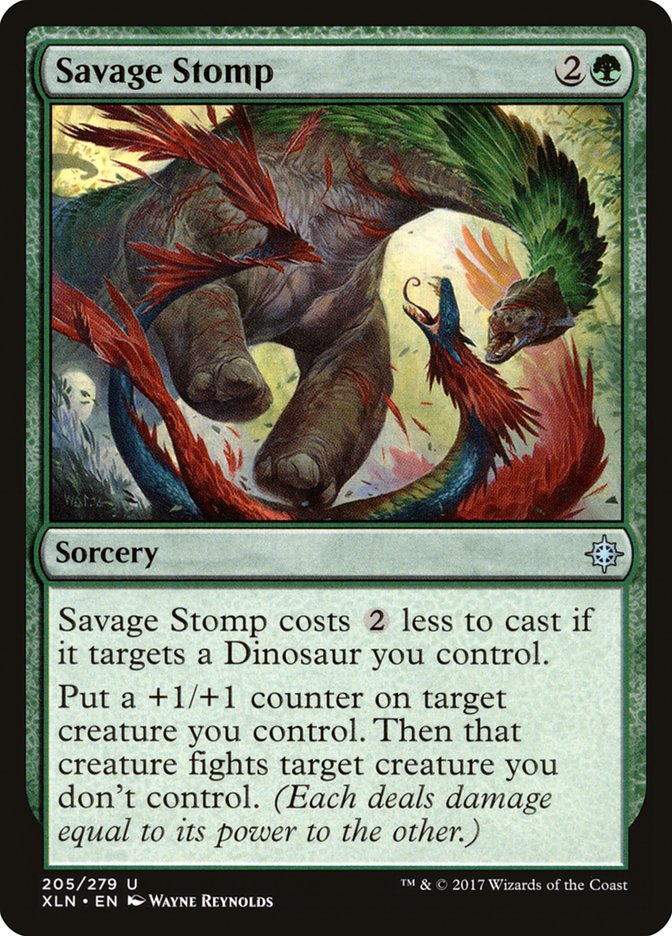We each have our plans for the Prerelease this weekend: swashbuckling Pirates, primal Dinosaurs.
They’re certainly the splashiest of the new tribes. Pirates and Dinosaurs are each spread across three colors, meaning that we’re all bound to play some number of them over the course of the weekend, synergies or not. Pirates are tricky, fiendish thieves who exploit weaknesses and loot for their own riches and glory. Dinosaurs are untamable behemoths, gods amongst the animals that surround them who thunder through the jungle seeking out unsuspecting prey.
Vampires get a flavor makeover, too, and their strategy has become familiar: lots of Vampires, each working together and independently for their combined selfish goals of assimilation of the local Humans. Hungry and fiercely dedicated to their united cause, the Vampires of Ixalan take the concept of colonization and settlement to a metaphorical peak.
But what about Merfolk?
These fish-like people, long associated with the manipulative magic of blue and, at least mechanically, their plentiful lords like Lord of Atlantis and Master of the Pearl Trident, have traversed into green, making them meatier and more traditionally aggressive. This isn’t the first time we’ve seen green Merfolk; Kiora’s Follower was famously green to match its namesake, and even the mighty Prime Speaker Zegana has some green in her. Until this set, solely green Merfolk have been absent from the annals of Magic.
Clearly, the Merfolk mechanic this time around is +1/+1 counters, which frequently shared with this color combination as is. Graft, if you’ll recall, belonged to the Simic Combine, and several fun creatures from Eventide leveraged counters. This is comfortable territory for a blue and green mage, and for the first time in several years, a well-developed tribe can take a crack at pairing Forests and Islands.
A cursory glance at the set’s two dozen Merfolk reveal something interesting; although this tribe displays mechanic and flavor aspects of both colors of Magic, their primary colors have different strategies: green likes getting mean and blue likes getting through. Although they can indeed work together, I’m more interested in leaning the Merfolk we have in two different directions for two very different decks.
First, let’s cut the grass.
Green has some aggressive creatures, and it’s about time we saw some angry green creatures starting small, getting big, and smashing. Playing in green alone doesn’t give us nearly everything we need, though, and we all know the best counter buddy in Standard: Winding Constrictor.
Winding Constrictor has a way of wriggling into decks of all different strategies and angles. What’s not to like about a multipurpose B/G creature with an on-curve (get it?) body and potentially outstanding interactions? Black gives us access to critical removal, some late-game noncreature pressure, and a bit of threat diversification, too. It pairs very well with this aggressive strategy. We might be losing Grim Flayer, but don’t pawn your Blooming Marsh just yet!
Along the same lines, we can find several non-Merfolk creatures that support the theme already blossomed by our main tribe. These aggressively costed critters can put the hurt on your opponent in a hurry, even with the potential for significant drawback.
This well-developed strategy morphs from the expiring Standard format very well, and adding a new tribe should make the transition simple and straightforward.
Creatures (28)
- 2 Verdurous Gearhulk
- 4 Winding Constrictor
- 4 Rishkar, Peema Renegade
- 4 Old-Growth Dryads
- 4 Kumena's Speaker
- 4 Wanted Scoundrels
- 4 Merfolk Branchwalker
- 2 Jungle Delver
Lands (22)
Spells (10)

This slender deck takes advantage of the fast, aggressively costed creatures available both in green and black, each alongside what I believe to be the two strongest Merfolk in an aggressive green deck without blue spells.
Merfolk Branchwalker is either a Sylvan Ranger or an easy-to-cast 3/2. It feels a lot like Coiling Oracle, except Coiling Oracle can’t crew Heart of Kiran. Kumena’s Speaker relies on a Merfolk being on the battlefield to be any more than a tease, but four Fetid Pools, which match the Island requirement and which can be cycled if another card is better, can keep a harder-to-kill alternative on the battlefield to make sure you get as many Isamaru, Hound of Kondas as you can draw.
Wanted Scoundrels and Old-Growth Dryads are tantalizing targets for your opponent’s removal. The ever-present Fatal Push answers them for next to nothing, with a big payoff on the other side. Nevertheless, these creatures are incredibly efficient, nearly unprecedented in their ability to push a deck’s power through the roof, provided a sufficiently well-suited line-up of cards.
To offset the potential downside of these powerful creatures, I’ve stocked Duress and Harsh Scrutiny in the maindeck. Together, this will help you not only remove answers from your opponent’s hand; it will help you prepare for what’s to come if things don’t go according to plan. Did your opponent keep a five-lander? Probably not a big deal to give them a free Rampant Growth. Did your opponent see you playing last round and kept the one-lander with Fatal Push in hand to answer your fast deck? Together, this battery of hand disruption gives you critical information, allowing you to play more securely into potential disaster. Driven // Despair, on either side, puts you far ahead and severely shortens the clock, combining evasion and significant card advantage.
The deck can have some truly explosive starts: turn 1 Old-Growth Dryads, turn 2 Winding Constrictor, turn 3 Rishkar and attack for nine. One-mana 5/5s can get there in the absence of removal.
While this deck features the format’s most efficient beaters, blue Merfolk head a different way, going under the wall instead of through it.
At least in tournament play, blue Merfolk are great working as a team, supporting counterspells by being efficient and synergetic, and coming into play by tapping Aether Vial. Merfolk are different this time around, and the blue path looks considerably different. And wetter. Grab your SCUBA gear; we’re diving deep.
Getting 1/1s every time you cast a Merfolk is pretty good. Getting Merfolk your opponent can’t target is better. Making any creature you cast a Merfolk and getting untargetable tokens? Now that’s tops.
Blue has enough power all on its own to make a Merfolk deck magnificent. Turning everything else in the deck into a Merfolk doesn’t hurt, either.
Glub glub!
Creatures (19)
- 4 Ornithopter
- 4 Metallic Mimic
- 4 Hope of Ghirapur
- 1 Kopala, Warden of Waves
- 4 River Sneak
- 2 Tempest Caller
Lands (20)
Spells (21)

Opt is so good.
That simple selective draw spell makes all the difference in smoothing out a clumsy six-card hand or helps you dig a little deeper for that sideboard answer. Its cost is so negligible as to almost be ignored. Anticipate seems incredibly overpriced now, and I think I’m all right with that. While Perilous Voyage can only target enemy permanents, the ability to scry 2 gives this a very Magma Jet-ish feel. The Shock was nice, but the scry was why it made it into so many control decks.
With both Arcane Adaptation and Metallic Mimic, you get perhaps the strongest Merfolk in the deck. Any and all creatures entering the battlefield get a +1/+1 counter, even the free Ornithopter. Hope of Ghirapur, which can help cast Reverse Engineer as an artifact, can be freely sacrificed to prevent your team from being destroyed by Fumigate the following turn. The deck is losing something by not playing Spell Pierce, but Hope of Ghirapur makes up for it.
After about the second or third land, you’re good. Thus, only fourteen Islands and a handful of nonbasics make up the deck’s land base. Field of Ruin seems like a bizarre hybrid of Ghost Quarter and Tectonic Edge. You’re not denying yourself a land anymore, and I personally think the cost is worth it. Plus, you can use it to fix for yourself should you need it. Though this deck doesn’t, both it and Desert of the Mindful thin the deck of its few lands.
As much as I like these two lists, neither covers my favorite Merfolk from this set: Deeproot Champion.
Quirion Dryad immediately springs to mind with this card; while printed many years ago in Planeshift, Quirion Dryad’s most recent appearance in Magic 2013 was where I first played with it alongside the broken, “colorless” spells of New Phyrexia, like Gut Shot, Gitaxian Probe, and Dismember. Together, this made the otherwise moderately interesting rare a runaway hit. Deeproot Champion has a lot to live up to, but it seems appropriate that green should get “permanent prowess.”
Deeproot Champion has lots of potential decks that want it, and unlike Quirion Dryad, it need not ever stray from its own color to find fun and exciting noncreature spells to help the deck work, like Shapers’ Sanctuary and Blossoming Defense to protect your best creature.
I personally like green and red, as red has its own prowess creatures, enough pressure to make the damage matter, and cheap spells to fill out the rest.
Creatures (15)
Lands (19)
Spells (26)

If you can’t enjoy playing a deck like this, I’m not sure if we can be friends.
Red and green decks have long been associated with explosiveness: Burning-Tree Emissary, Ghor-Clan Rampager, and Atarka’s Command have been running the color combination for several years. Every once in a while, we get something like that in Standard again, and I think there’s a potential for that now. Even though these aren’t the Dinosaurs everyone’s talking about, I’m very excited for Raptor Hatchling and Deathgorge Scavenger.
Savage Stomp, as an improvement over Prey Upon, is incredibly powerful, and it means you’re triggering Enrage and likely surviving against whatever you’re fighting. Even if you target Deeproot Champion, you’re getting two +1/+1 counters before you fight. The deck focuses its threats low, looking to trigger Deeproot Champion and attack with it consistently enough that your opponent will not be able to effectively react to it. Soon, it’ll be out of range of even powerful targeted removal and damage-based sweepers. Cartouche of Zeal gives the deck a little extra velocity, making Deathgorge Scavanger exceptionally aggressive and giving Raptor Hatchling a bit more toughness. Being able to suddenly protect the Hatchling is an attractive option, and combined, these options, along with current Standard staples like Soul-Scar Mage, create an effective package.
Merfolk are flexible enough to bridge the color and tribe gap, and they don’t need each other as much as some of the other tribal cards. Which ones are you favorite? Are you already looking ahead to Standard to find what’s just around the riverbend?


